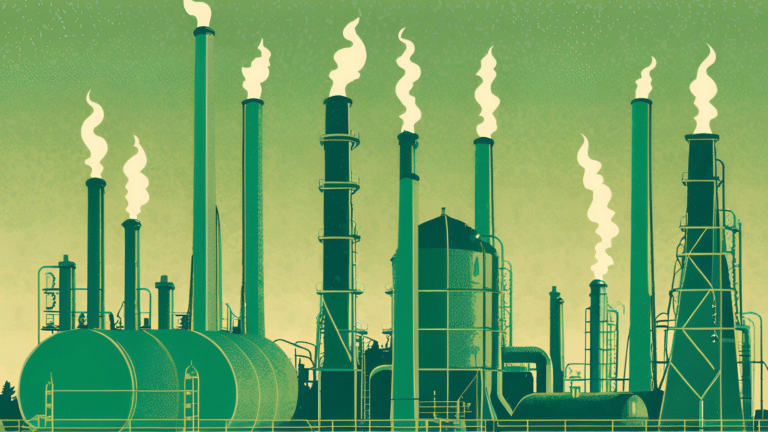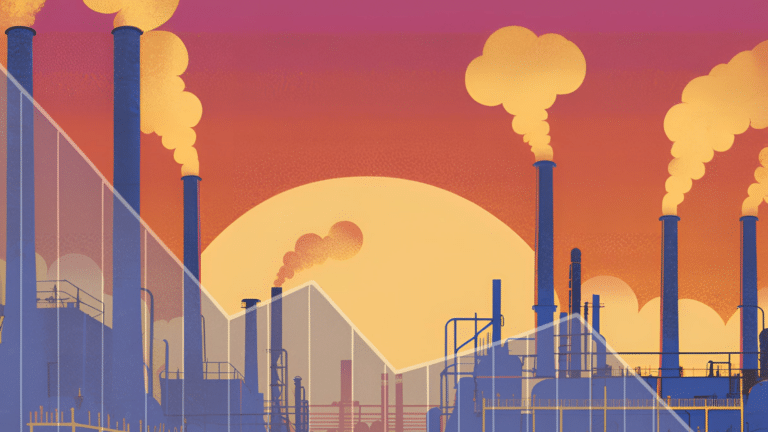China Halts U.S. LNG Imports Amid Tariff War
China has ceased importing liquefied natural gas from the United States since early February, as the ongoing tariff war impacts energy trade.
Current Access Level “I” – ID Only: CUID holders, alumni, and approved guests only
Summaries by Gautam Jain, Luisa Palacios & Daniel Propp • March 02, 2023
This event summary reflects the authors’ understanding of key points made in the course of the roundtable. It does not necessarily represent the views of the Center on Global Energy Policy (CGEP). The piece may be subject to further revision. Contributions to SIPA for the benefit of CGEP are general use gifts, which gives the Center discretion in how it allocates these funds. More information is available at https://energypolicy.columbia.edu/about/partners. Rare cases of sponsored projects are clearly indicated.
On October 11, 2022, Columbia University’s Center on Global Energy Policy (CGEP) convened a roundtable to discuss whether there is access to adequate financing for oil and gas assets to meet energy security and affordability needs during the transition to net-zero emissions. Understanding oil and gas infrastructure included in net-zero scenarios as “transition assets,” the workshop set out to explore several issues: whether energy security considerations, as crystallized by Russia’s war in Ukraine, might signify a longer period of demand for transition assets; whether there is a risk of underinvestment in these assets; what role the private sector can play in financing these assets; what role, if any, public policy can play; and how such investments can be made without setting back climate goals.
The workshop brought together representatives from international organizations, investment banks, institutional investor entities, private equity firms, energy companies, think tanks, government, non-governmental organizations, and academia. This roundtable summary focuses on the main topics covered during the lively discussion.
Discussing transition infrastructure is complex because it can mean a few different things: retiring existing energy infrastructure related to coal and even oil and gas, the economic future of existing energy infrastructure that is still needed, and investments in new oil and gas infrastructure given energy security considerations.
It was not a surprise, therefore, that there were opposing views on whether investments in new oil and gas infrastructure are needed, with some participants strongly arguing in favor while others cautioned not to overreact to short-term supply issues.
Among those in favor, some participants believed that new oil and gas investments are needed because of the gap between ambition and reality: the IEA’s net-zero scenario assumes no investments in new oil and gas assets (except those that have reached a final investment decision), but one participant stated that the world is not on the pathway to net-zero emissions. Arguments in support of more new oil and gas investments were centered on the need to create resilience in energy systems, keep social stability, and reduce price volatility; otherwise, it will be a bumpy transition. Some cautioned that if investments are not made today, the market will get tighter and energy prices will continue to rise, leading to a public backlash—implying the need for more supply not less. Other participants cautioned that without sufficient investment in renewables or oil and gas, the transition will fail.
Continuing with this line of argument, one participant said that economies need access to clean and cheap energy that’s available in a 24/7 timeframe, and that no single energy source can do all of these things simultaneously. This comment suggests the need for a diverse energy mix. For some participants, the security of supply comes not only from a diversity of (friendly) energy suppliers but also from redundancy, and the question is how to pay for this redundancy.
Other attendees believed that what is more urgently needed than investments in oil and gas is a faster deployment of renewable energy. One participant argued that if sufficient investments are not made in renewable energy, then all of this discussion is theoretical. According to this participant, the proportion of spending on renewables to fossil fuels should be 4:1 to meet net-zero targets, but is currently 0.9:1. This paradoxically means that because there is not going to be enough renewable energy over the next few years there will have to be more investments in fossil fuels.
One participant stressed that many conversations treat the transition as inevitable, but most of these net-zero models assume a frictionless environment. The reality is that there are a lot of social and regulatory barriers to clean energy deployment. In this context, one participant brought up the example of India to explain the challenges of faster deployment of clean energy technologies. India is trying to achieve 500 gigawatts (GW) of renewable energy by 2030, which the participant said is extraordinarily optimistic. But if the country achieves that growth, that’s still less than half of India’s expected power demand increase over that time, the participant argued. To meet that residual amount, the country would need a 25 percent increase in coal generation, the participant estimated, or rely on imported natural gas, which the country might be reluctant to do, especially given the volatility of gas prices.
One participant said that this discussion about whether to invest in transition assets might be a first-world problem because the transition is likely to be multispeed with a different mix of energy sources in different parts of the world. Another participant stressed that renewables are cheaper than fossil fuels in most developing countries, with deployment costs continuing to plummet.
Separately, one participant argued that the oil and gas sector has structural demand issues and that investors in these areas are using the geopolitical crisis as a smokescreen. Another participant contended that it is important to separate longstanding concerns about the structural demand for oil and gas from the crisis that has occurred since Russia’s invasion of Ukraine. More than one speaker agreed that energy security issues should not be an excuse for more oil and gas investments.
There was a healthy discussion about the role of the private sector in financing transition assets. To start, one participant put forward what investors might look for when evaluating transition assets: a return on capital while managing regulatory and terminal risks.
Some participants had an optimistic view that the market will end up doing most of the job of financing, retiring, and repurposing transition assets. Several participants stated that existing energy infrastructure has value—it can be repurposed for greener uses. One example cited in this regard was oil and gas acreage in Norway being repurposed for solar PV and offshore wind projects, and workers being retrained in these technologies.
Several participants mentioned the backwardation in oil prices, i.e., lower prices in the futures market versus the current or spot price. While backwardation is generally interpreted as a negative sign, one participant offered an alternative interpretation: the market is pricing in insufficient investments currently but is expecting more investments in the coming years.
Some participants with an optimistic view of the private sector’s investments in transition assets did not discount the role of policy. Instead, they argued that while markets have made progress in investing in the transition, policy and regulatory frameworks need to be supportive. An example cited of the need for policy and the market to work hand-in-hand is in financing LNG infrastructure in Europe to diversify away from Russian natural gas, while appreciating that in about five years demand may fizzle. One participant suggested that a solution could be to have flexibility in contracts to switch off-takers, but there may be a need for public policy or government intervention to address the temporary nature of these investments.
Several participants disagreed with the view that the private sector can address the problem largely on its own. Some argued the aforementioned backwardation in oil and gas futures indicates not to invest in new capacity but rather just invest in current capacity. As one participant put it: If the goal is to invest in oil and gas today to avert a crisis, it’s difficult to think that the market can help find a solution since it is pricing in a terminal value of close to zero for oil and gas assets. It’s difficult to find a buyer to underwrite a long-term project if demand is flat or declining. One participant thought that ESG pressures or the low terminal value in oil and gas assets will require national oil companies in emerging countries to fill the gap rather than private companies. As an example, one participant commented that plenty of investments were taking place in Qatar LNG.
On the topic of low terminal value, one participant said investors are concerned about stranded-asset risk. Another added that banks talk about the assessment of stranded assets, but they can’t value these assets if they don’t know when they will be stranded. In response to this point, a participant said real-world examples can be used as references in determining the value of stranded assets, such as lignite retirements in Germany and the North American Electric Reliability Corporation’s closures of coal plants.
When discussing retiring assets, the topic of a just transition came up. One participant asked what resources are in place to help communities impacted by retiring infrastructure, and said that social and economic impacts need to be factored into transition planning.
One participant summarized the role of policy this way: Markets are good at transitioning but don’t do it quickly enough, suggesting that the only way to revolutionize energy infrastructure was via policy. Another participant agreed and said that infrastructure spending needs to be ramped up, which can’t happen without government involvement. Several participants commented that the Inflation Reduction Act (IRA) is precisely this type of large policy market intervention. One attendee proposed using a blended approach between incentives (e.g., the IRA) and penalties (e.g., the EU Emissions Trading System).
One participant said there is no absence of technology or capital for clean energy, but political will is absent. The lack of political will to accelerate the transition is due to the inability to connect the cost of doing nothing with its consequences, another participant argued.
This idea of the need for a framework to finance transition assets received pushback from another participant who said that such a broad or global approach could have negative spillovers in emerging market and developing economies (EMDE), as they may view these investments as stepping away from decarbonization goals.
The discussion then turned to financing the retirement of fossil fuels, particularly for EMDE. One participant stated that there could be financial packages in return for commitments from EMDE governments to expedite steps to achieve their climate goals, similar to the approach being taken in South Africa with the Just Energy Transition Partnership to phase out coal.
The topic of carbon pricing came up in several contexts.
A participant said the one underlying feature in discussions about transition assets and related topics is the need for a reliable and transparent methodology for measuring carbon emissions. Without that, it is difficult to make informed decisions. Carbon pricing, including in offset markets, cannot be reliable without proper measurements. And to make climate action enduring, the participant argued, a carbon price is needed.
Carbon offsets are a huge opportunity for emerging markets to capitalize on some of their natural assets, one attendee thought. Investors see carbon offsets as an opportunity to allocate capital to this market, other participants added.
One attendee said that a carbon credit could be one way to compensate an asset owner for early retirement. Another participant had a similar view, stating that if a company can get carbon credits and monetization for verifiable early closure of high-emitting assets, it could unlock more private capital. Carbon credits can also help reduce emissions from hard-to-abate sectors, another participant offered.
In relation to carbon taxes, one participant said that higher energy prices as a result of a carbon tax are not politically feasible. It’s much better to do what the IRA did: reduce the price of renewable energy rather than increase the price of fossil fuel. Another participant directly addressed this argument by saying that while a carbon tax may be a no-go currently, circumstances change and the environment could eventually become conducive to a carbon tax, as the issue is only going to grow in intensity.
Several participants brought up the need to broaden climate finance to include transition assets. The boundaries of climate finance need to be redefined to not only be about financing the greenest of the green, one participant argued. Others called for a new asset class called “energy transition capital.” Another participant said there is no shortage of financing, rather there is a shortage of bankable deals that fit within the fiduciary constraints of investors. One attendee stated that if there was clarity around a policy framework for transition assets, banks would fund investments. Risks to the private sector from these investments are both reputational and structural.
How the world finances expedited closure of high-emitting facilities, with public and private money, is going to determine whether it meets its climate goals, an attendee argued. A lot of private capital wants to expedite closure dates, this person continued, but the minute a private investor takes a coal asset on their books they are penalized. This led to the question of whether these transition assets could be accounted for differently so that investors holding these assets don’t get penalized. Defining what is acceptable from a transition finance standpoint could unlock more private capital.
While discussion about the closure of existing high-emitting assets sheds light on both the challenges and opportunities with the difficult work of the energy transition, it also helps frame the discussion about the financing of new transition assets. As one participant put it, “We need to think about the end of assets, and also the beginning.” Another attendee argued that there should be a path on the day these assets are built for retiring or repurposing them.
In a similar vein, there were some suggestions for guardrails around investments in new oil and gas infrastructure. Among the proposals for these investments to be viable were assets built with systems in place to minimize emissions (e.g., carbon capture and storage), a shorter lead time to be suitable for early retirement, and the potential for retrofitting (e.g., hydrogen-ready infrastructure or assets that can be switched to low-carbon fuels).
This Energy Explained post represents the research and views of the author. It does not necessarily represent the views of the Center on Global Energy Policy. The piece...

This Energy Explained post represents the research and views of the author. It does not necessarily represent the views of the Center on Global Energy Policy. The piece...

This Energy Explained post represents the research and views of the author. It does not necessarily represent the views of the Center on Global Energy Policy. The piece...

Full report
Summaries by Gautam Jain, Luisa Palacios & Daniel Propp • March 02, 2023